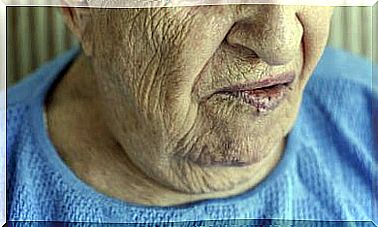The Reactive Brain: When Anticipating Everything Brings Suffering

The reactive brain orchestrates, facilitates and activates the mechanisms of anxiety. This way of thinking and processing information works by putting us on alert by anticipating risks that often do not even exist. Likewise, this type of approach is what causes our emotions to overwhelm us, that we lack initiative and even that we are more impulsive and less reflective.
Viktor Frankl pointed out with great wisdom that when we cannot change a situation that causes us pain or discomfort, we can vary our attitude towards that problem to reduce suffering. This type of strategy and mental engineering could not be carried out by someone with a reactive brain. Because that ability to vary the way in which reality is faced is more typical of someone proactive.
Thus, despite the fact that this last term, that of proactivity, has been related in recent years to the field of organizations, leadership and work psychology, in reality we are facing a concept that emanates health and psychological balance. The positive of all this is that each of us has the ability to go from reactivity to proactivity, to handle adversity efficiently.
We analyze it.

The reactive brain, what is it like?
The reactive brain is related to a very particular type of cognitive processing. It is the one who sees changes as threats and who responds to stimuli by anticipating in the worst way: with anguish or impulsively. Neuroscientists have spent years trying to understand the neurological bases of anxiety and also what we already know as the hyper-reactive mind.
Studies, such as those carried out in 2018 by Dr. Alexander Olsen, professor in the department of psychology at the Norwegian University of Science and Technology, reveal interesting facts that are worth knowing.
Thinking proactively and hyperreactively, what’s the difference?
The human brain can process information, reason and drive our behavior based on two basic mechanisms: proactivity and hyperreactivity. Let’s see the difference:
- The proactive system starts from fluid intelligence. This type of reasoning is the result of our ability to solve problems by using logic and identifying patterns, thinking in a more reflective way.
- In contrast, the brain’s reactive system is more impulsive and needs to respond quickly to environmental stimuli. It does it this way because, often, it starts from fear, from that alarm system that activates the amygdala and that invites us to react before thinking.
People use both ways of thinking. The reactive system is useful for us to act in the face of risks and threats in the environment. The proactive approach, meanwhile, allows us to make better decisions and handle everyday stress more efficiently.
Now, the problem comes when we limit ourselves to using that first approach, when the reactive brain orchestrates almost every situation. It is then that we drift into a constant state of anxiety.
The reactive brain and white matter
Dr. Alexander Olsen’s team conducted their study in collaboration with the University of Southern California at the Stevens Institute for Neuroimaging and Informatics. The goal was to see what mechanisms promote and shape the reactive brain. What could be seen through MRIs is that fluid and proactive thinking activates the white matter.
In contrast, those people who reasoned reactively had a lower density in the brain white matter. Remember, this area made up of a wide and complex network of myelinated axons, essential in brain communications. In addition, it is key to the connection between the left and right hemispheres.
In essence, when someone becomes used to responding to their environment in a reactive way, they enter a state of constant hypervigilance. He only perceives threats, anticipates more problems and drifts into states of stress. These situations have a great impact on the brain, they alter it to the point of disorganizing that network that makes up the white matter.

How to go from reactivity to proactivity?
The reactive brain cannot be turned off, just as we cannot completely eliminate reactive reasoning from our minds. This way of processing the world is useful and necessary to us at times. Yes when there are threats, yes when there are dangers in our environment.
Now, the ideal is that the reactivity is activated on very specific occasions. Beyond these situations, it is the proactive mindset that will mediate our well-being by reducing anxiety states. How to develop or activate it with greater intensity?
Here are some strategies:
- Edward de Bono defined proactive thinking as that mechanism by which one limits oneself to just letting things happen. It is to become active agents of our reality.
- Emotional management and impulse control is essential and necessary in all cases.
- We must develop a more reflective mindset, also open to new perspectives. Mental rigidity always leads to reactivity and fear.
- Thought is also determined by our attitude and the way we face things. Being positive, but realistic at the same time, being intuitive but logical at the same time, defines an efficient approach.
- It is also necessary to know how to tolerate frustration and trust ourselves. As bad as things go, we all have the resources to plan and act.
- Aerobic exercise also makes it easier for us to oxygenate and nourish that important area of the brain, such as the white matter.
To conclude, it is very easy to fall into the prison of a reactive brain that only anticipates dangers and threats. That this happens is within the probable. Now, the decisive thing is knowing how to make plans: if something worries us, let’s design a plan to address that challenge . Doing so will make us proactive.









